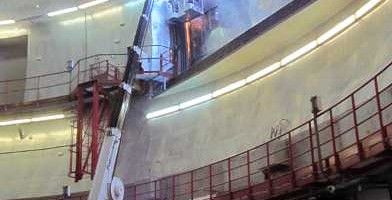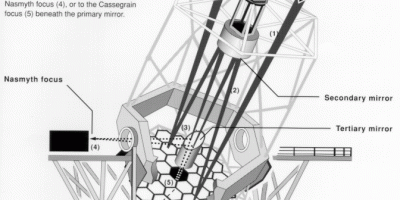Star birth
This amazing picture of stars being born inside a nebula was taken by Daniel Lopez using Grantecan. Near the centre of the picture is a dark red spot – that’s the new star which shines mostly in the infrared. The butterfly shape is a large disk of dust and gas orbiting the star. The gas near the star shines because it is ionized (like the inside of a flourescent…





